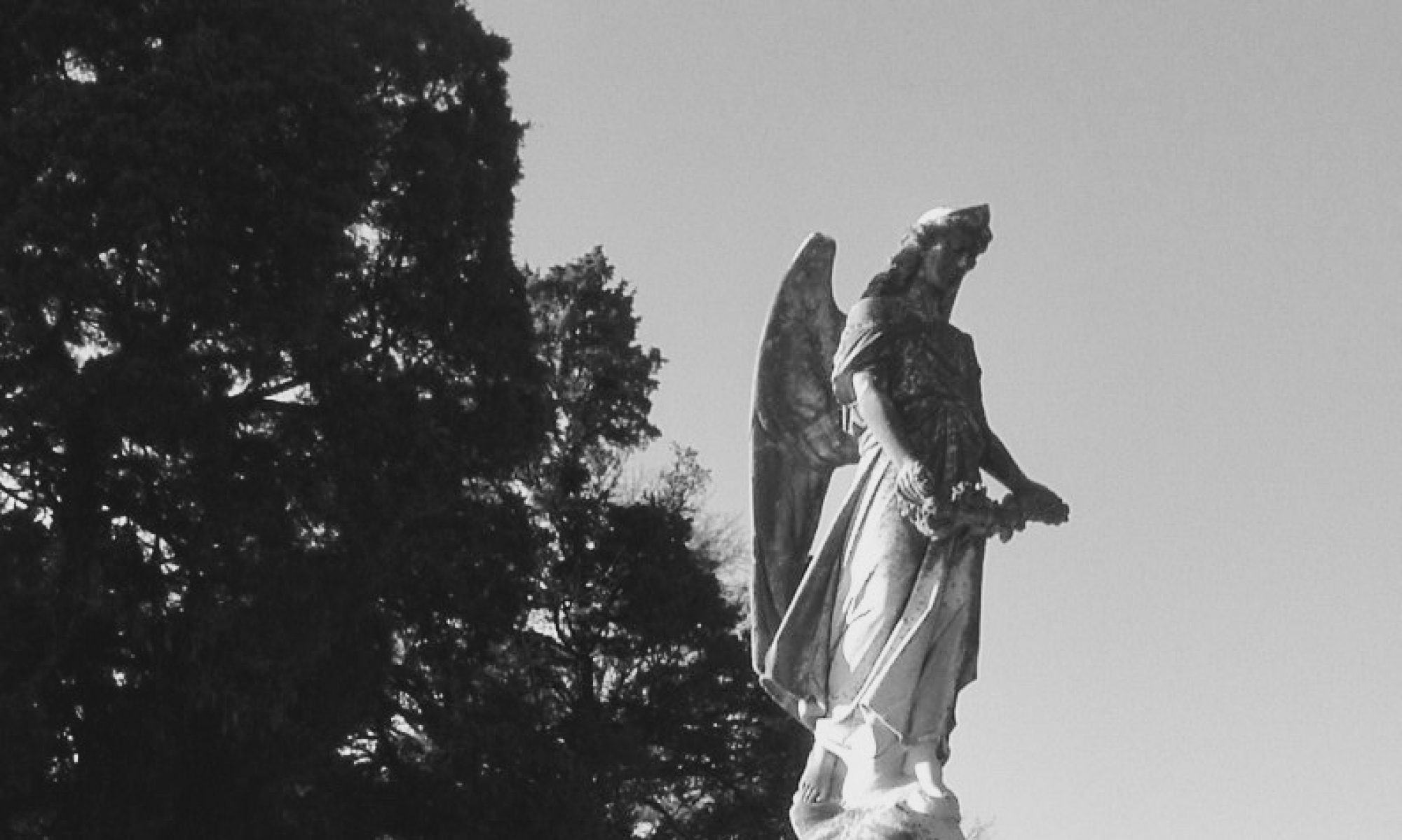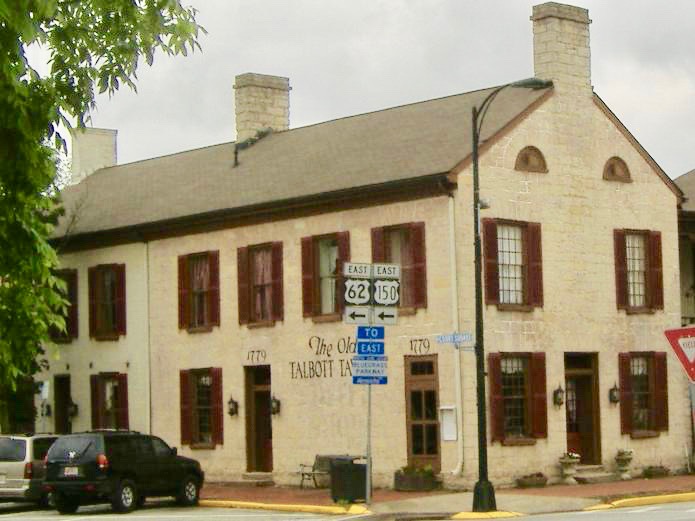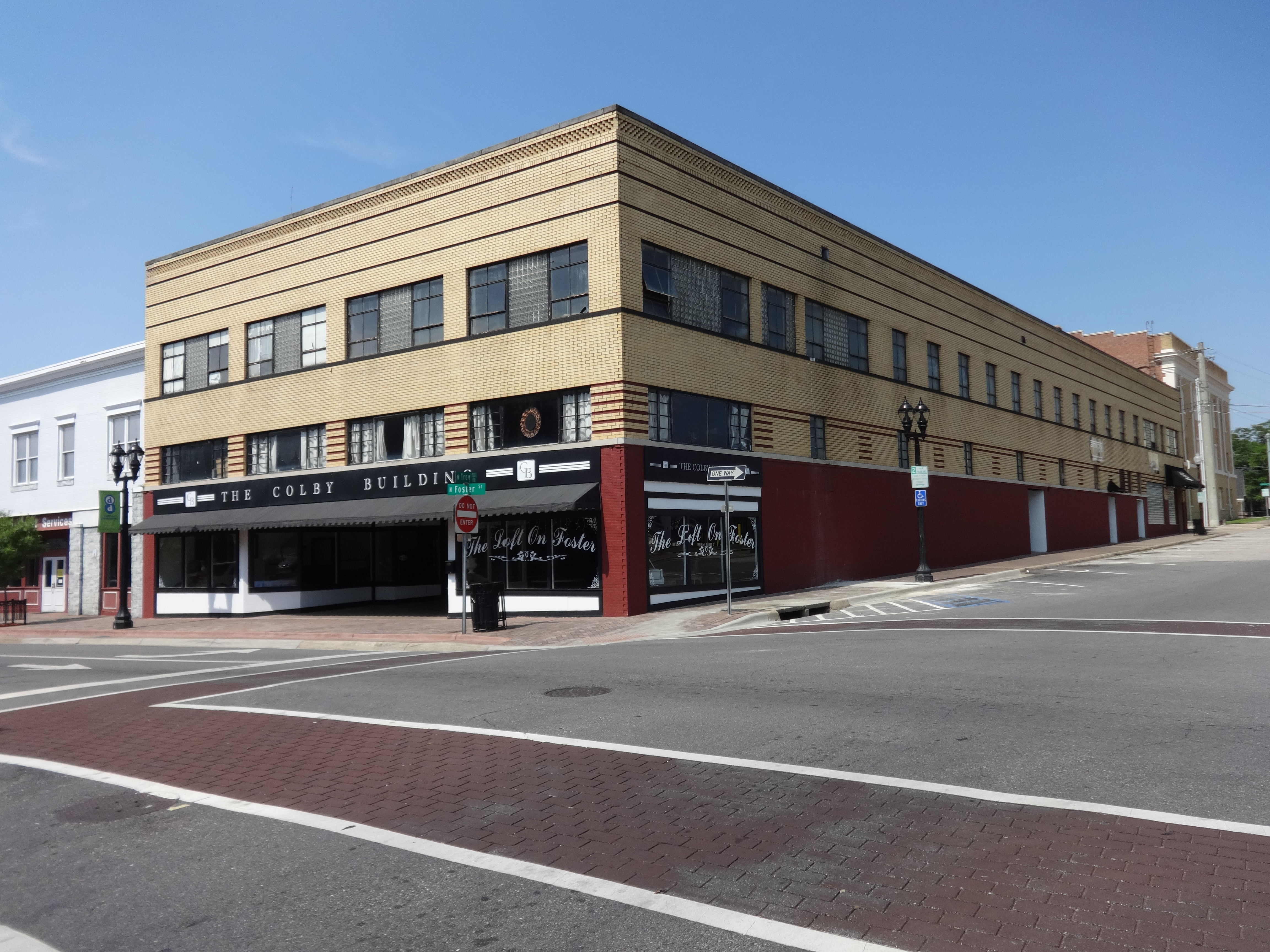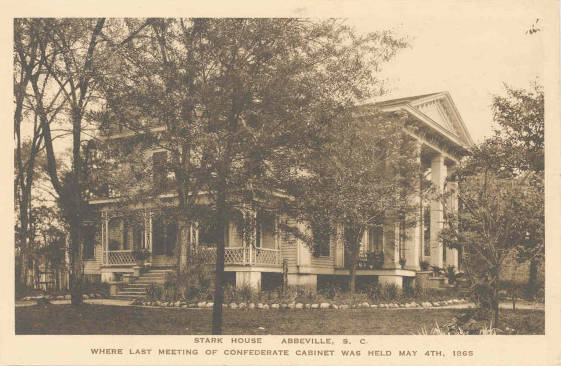One of my goals with this blog is to provide coverage of ghost stories and haunted places in a comprehensive manner. Perhaps one of the best ways to accomplish this is to examine ghost stories county by county, though so far, researching in this manner has been difficult. In my 2015 book, Southern Spirit Guide’s Haunted Alabama, I wanted to include at least one location for every county, though a lack of adequate information and valid sources prevented me from reaching that goal. In the end, my book was published covering only 58 out of 67 counties.
Further research has uncovered information for a few more counties and on Halloween of 2017, Kelly Kazek published an article on AL.com covering the best-known ghost story for every county. Thanks to her excellent research, I’ve almost been able to achieve my goal for the state.
For a further look at Alabama ghosts, please see my Alabama Directory.
See part I (Autauga-Cherokee Counties) here.
See part II (Chilton-Covington Counties) here.
See part III (Crenshaw-Franklin Counties) here.
See part IV (Geneva-Lawrence Counties) here.
See part V (Lee-Monroe Counties) here.
See part VI (Montgomery-Sumter Counties) here.
See part VII (Talladega-Winston Counties) here.
Montgomery County
Pratt Hall
Campus of Huntingdon College
Montgomery
Huntingdon College’s most famous spirit may have followed the college as it moved to Montgomery from Tuskegee. In the school’s original dormitories, the upper floors, known as “Sky Alley,” were supposed to have been haunted by a Red Lady. After the school’s move to its new campus and the construction of Julia A. Pratt Residence Hall in 1912, the Red Lady may have taken up residence on the third floor.
Students still tell the legend of the Red Lady. A young woman arrived at the school from New York. Very much out of place in this Southern school, the woman remained aloof and was shunned by the other students. Depressed, she committed suicide in her room. In life, this young woman had always favored red, and her lonely spirit is still seen drifting the corridors of Pratt Hall in her favorite color.
Sources
- Enzwiler, Susan & Trina Brinkley. National Register of Historic Places Nomination form for Huntingdon College. August 1999.
- Sellers, Shawn. Montgomery: A City Haunted by History. Shawn Sellers 2013.
- Serafin, Faith. Haunted Montgomery, Alabama. Charleston, SC: History Press, 2013.
- Windham, Kathryn Tucker and Margaret Gillis Figh. 13 Alabama Ghosts and Jeffrey. Tuscaloosa, AL: University of Alabama, 1969.
Morgan County
Old State Bank
925 Bank Street
Decatur
In 2015 a friend of author Jessica Penot was driving through downtown Decatur with her young daughter. As they passed the Old State Bank, the child asked, “Mommy, why was that lady in the black dress murdered?” The mother immediately asked her daughter what she meant, to which the child replied, “Can we quit talking about this now?” The mother did a bit of research and discovered that there are two female spirits associated with the old bank, one who is weeping and one in a black dress.

Literally in “high cotton,” the Bank of the State of Alabama built this structure as a branch in 1833. Nearly a decade later, when the state legislature discovered corruption they refused to renew the bank’s charter, and the bank was shuttered. The building was requisitioned as a hospital during the Civil War as the city passed between control of Confederate and Union forces. At the end of the war, Decatur lay in ruins except for a few buildings including this one.
The identity of the two mysterious female entities is unknown, however. Perhaps they are the lady loves of soldiers who breathed their last here or maybe they are nurses who tended to the wounded. These spirits have been seen by visitors and staff alike, and investigations have uncovered evidence of their presence.
Sources
- Floyd, W. Warner. National Register of Historic Places Nomination form for State Bank Building, Decatur Branch. 15 June 1971.
- Langella, Dale. Haunted Alabama Battlefields. Charleston, SC: History Press, 2013.
- Penot, Jessica. “The little girl who saw a ghost.” Ghost Stories and Haunted Places Blog. 28 April 2015.
Perry County
Marion Military Institute
1101 Washington Street
Marion
As the oldest military junior college in the country, Marion Military Institute traces its roots to the opening of Howard College in 1842. A Baptist institution, Howard College opened its doors as a school for boys. During the Civil War, when military training became necessary, the school added a military department. In 1863, the college’s chapel and Lovelace Hall were commandeered for use as a Confederate hospital. Operating as the Breckinridge Military Hospital, the military’s sick and wounded filled these school buildings for two years. The dead were buried behind the school’s chapel.
Howard College moved to Birmingham in 1887 and evolved into Samford University, and the Marion Military Institute was established on the legends-filled campus. Students have reported supernatural activity throughout the campus, though sources provide little detail.
Sources
- Higdon, David and Brett J. Talley. Haunted Alabama Black Belt. Charleston, SC: History Press, 2013.
- “History.” Marion Military Institute. Accessed 5 July 2015.
- Perry County Heritage Book Committee. The Heritage of Perry County, Alabama. Clanton, AL: Heritage Publishing Consultants, 1999.
Pickens County
Pickens County Courthouse
1 Courthouse Square
Carrollton
The north side of the late 19th century courthouse bears an arrow pointing towards the garret window at the top of the structure. This arrow points towards the ghostly window pane that is literally at the heart of Pickens County history and legend.
Twelve years after the first courthouse was burned during the Civil War, the second courthouse erupted in flames in 1877. Rumors spread that the courthouse was set alight by a freed slave, Henry Wells, who lived nearby. He was arrested, and a mob gathered on the courthouse lawn to mete out “justice.” Incarcerated in the attic of the building, Wells peered down on the mob screaming his innocence.
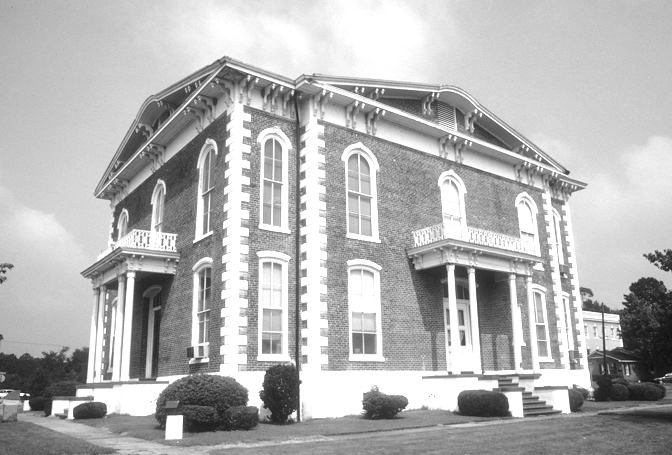
A storm erupted, and a bolt of lightning struck nearby as Henry Wells was hung for his supposed crime, though proclaiming his innocence until the very end. Citizens passing the courthouse the next morning were shocked to see Wells’ visage etched into the pane of the window from which he had peered down on the mob. Frequent washing of the window has not been able to scrub the mysterious image.
As with many legends, there is a mix of fact and fiction at work here. While the image in the window pane is undeniable, the history is confused. Apparently, a lynch mob did gather on the courthouse lawn once, but for a murderer named Nathaniel Pierce. The mob succeeded in lynching Mr. Pierce. Henry Wells was arrested for the arson of the second courthouse, though he was not put to death by a mob. There are also questions as to the actual existence of the windows, which may have been added to the façade sometime after the deaths of both Pierce and Wells.
Sources
- Higdon, David and Brett J. Talley. Haunted Alabama Black Belt. Charleston, SC: History Press, 2013.
- Pearce, Jamie Roush. Historic Haunts of the South. Jamie Roush Pearce, 2013.
- Windham, Kathryn Tucker and Margaret Gillis Figh. 13 Alabama Ghosts and Jeffrey. Tuscaloosa, AL: University of Alabama, 1969.
Pike County
Pace and Shackelford Halls
Campus of Troy University
Troy
Built in 1947 and 1930, respectively, these two residence halls have both been the scene of poltergeist activity. The activity in Shackelford Hall is explained as the product of a young female student’s suicide. Depressed over her fiancée’s death in a war, “Sally Shack,” as tradition identifies her, hanged herself in this building. Rumors state that two female students living here entered their dorm room to find two pens levitating. The incident led the young ladies to vacate their room the following day.

In the 1990s, a few students in one of these dorms decided to play with a Ouija board in an attempt to contact the spirit in Pace Hall. The group succeeded in contacting something after which the terrified girls witnessed “a paper clip tapping on their window from the outside, and things moving around the room.” As a result, the university had the room cleansed to settle the activity, though students continue to encounter activity throughout the buildings.
Sources
- Brown, Alan. The Haunting of Alabama. Gretna, LA: Pelican Publishing, 2017.
- Ferrell, Mary. “Ghost stories on campus.” Tropolitan (Troy University). 30 October 2014.
Randolph County
McCosh Mill
McCosh Mill Road
Rock Mills
Though the location is a bit remote, the ruins of this mill have become a popular place for picnicking families and teenagers searching for a thrill. Located on the banks of Wehadkee Creek, this mill possibly dates to the early 1870s when it was constructed by James Eichelburger McCosh, grandson of local industrialist Jacob Eichelburger who built the cotton mills in Rock Mills. The mill, which ground corn into meal and wheat into our, operated until 1958. It was purchased by the U.S. Army Corps of Engineers in 1970 as part of the building of West Point Lake. According to the National Register of Historic Places nomination form, the mill remained standing until vandals set it ablaze. The stone foundation and the mill race are the only remaining features at this site.

This mill figures into lore on both sides of the state line, and there are many stories and much misinformation. A friend of mine, Celeste, and her husband Randy lived near the ruins until recently. The couple would often venture down to the site after dark to enjoy the quiet, and it is here that they have had a few experiences. Randy rode his four-wheeler down to the ru- ins one evening alone, and while he was there felt that something climbed onto the back of the vehicle with him. Fearing what was behind him, he started back home and never looked back. The unsettling feeling did not leave him until the next day.
A photographer and friend of Celeste’s took her children down to Wehadkee Creek to enjoy the water. As they played, the woman took video and photographs. At one point in the video, a woman appears near the children for a split second. After seeing the vid- eo, the startled mother looked over the photographs and saw the same woman in a few of the photographs seemingly watching from the treeline.
The ruins of the mill are located at the end of McCosh Mill Road which begins in Troup County, Georgia and eventually turns into a dirt road. Continue down this road to reach the mill; though proceed with caution as the road is heavily rutted and damaged from recent logging in the area. The site cannot be reached from Alabama.
Sources
- Floyd, W. Warner & Ellen Mertins. National Register of Historic Places Nomination form for the McCosh Grist Mill. 27 May 1976.
- Interview with Celeste P., LaGrange, GA. 23 July 2015.
- Randolph County Heritage Book Committee. Heritage of Randolph County, Alabama. Clanton, AL: Heritage Publishing Consultants, 2000.
Russell County
Elite Café
1501 Fifth Avenue
Phenix City

On the evening of June 18, 1954, as state attorney general nominee Albert Patterson walked to his car parked in the parking lot between the Coulter Building and the Elite Café (pronounced ee-light), he was shot three times. He was able to crawl towards the Coulter Building where he died on the sidewalk. The assailant was never apprehended, though he was most likely associated with the organized crime and the rampant corruption in Phenix City that Patterson had been fighting to destroy.
In the early 20th century, Phenix City had a reputation as the wickedest city in America. Fueled by the influx of soldiers to Columbus, Georgia’s Fort Benning, across the Chattahoochee River from Phenix City, the city had become a haven for prostitution, gambling, alcohol, and other forms of vice. Patterson, a successful lawyer and politician, campaigned on cleaning up the city. Sadly, it took Patterson’s death to spur these changes.
Higdon & Talley report that a gentleman in an old-fashioned suit has been seen in the parking lot and on the sidewalk around the Elite Café and the Coulter Building. Perhaps Patterson is still minding Phenix City hoping it will not return to its sinful ways.
Sources
- Grady, Alan. “Albert L. Patterson.” Encyclopedia of Alabama. 24 July 2007.
- Higdon, David and Brett J. Talley. Haunted Alabama Black Belt. Charleston, SC: History Press, 2013.
St. Clair County
St. Clair County remains the bane in my side. Despite all the searching, both online and in published sources, I cannot find an adequately sourced haunting within the county. Kelly Kazek describes the Flatwoods Community as “a settlement of freed slaves during Reconstruction” that “was later burned.” Nothing online or in the county heritage book provides information on this community. I have finally come across a haunting from this county! Please see my article on the roadside grave of William Gibson outside Springville.
Shelby County
Old Shelby County Courthouse
1854 Old Courthouse Circle
Columbiana
The oldest remaining courthouse in the state, the Old Shelby County Courthouse has seen a myriad of uses in its long existence. Constructed as a courthouse in 1854, miraculously, this building escaped being burned by Union raiders during the Civil War. The building was used by the county until 1908 when a new courthouse was built nearby. The building was put to use as a hotel and later a boarding house until around 1934 when the public library opened on the second floor. It now serves as a county museum.

A spirit reportedly dwells among the artifacts displayed within the old building. In a room on the second floor, the blinds are regularly adjusted by unseen hands. The same room often gives staff members a creepy feeling, and author Alan Brown reports that some workers in the building at night did see a spectral figure in this room. An investigation conducted in 2002 did not turn up any evidence of spiritual activity, though the investigators did have some strange personal experiences.
Sources
- Brown, Alan. Haunted Birmingham. Charleston, SC: History Press, 2009.
- Floyd, W. Warner. Nation Register of Historic Places Nomination Form for Columbiana City Hall. 19 July 1974.
- Reed, Martin J. “Shelby County’s 1854 Old Courthouse in Columbiana gets new address, improvements.” com. 31 January 2013.
- “Shelby County ghosts busted.” Shelby County Reporter. 24 July 2002.
Sumter County
Alamuchee-Bellamy Covered Bridge
Campus of the University of West Alabama
Livingston
The oldest remaining of Alabama’s covered bridges; the Alamuchee-Bellamy Covered Bridge may harbor the spirit of an outlaw. The bridge was originally constructed to span the Sucarnoochee River but was moved to the nearby Alamuchee Creek after its replacement by a concrete bridge. It served automobile traffic there until 1958. The Sumter County Historical Society acquired the bridge in 1971, restored it, and moved the bridge to the campus of the University of West Alabama.

The bridge figures into the story of notorious Sumter County Sheri Stephen S. Renfroe. Sometimes known as the “Outlaw Sheriff Renfroe’s notoriety comes from his involvement in murders, leadership in the local Ku Klux Klan, excessive drinking, and embezzlement while in office. Renfroe eventually fled the county, but when he returned he was apprehended by a mob of locals and was lynched either near or on this bridge. A dark shade seen pacing the length of the bridge is believed to be the Outlaw Sheriff Author Alan Brown, a professor at the university who has penned many books on Southern ghosts, stated in a 1994 article that he doesn’t believe the bridge to be haunted.
Sources
- Alamuchee-Bellamy Covered Bridge. Wikipedia, the Free Encyclopedia. Accessed 16 May 2015.
- “Bridge harbors legend: Serenity of covered bridge belies dark legend.” Mobile Register. 1 November 2004.
